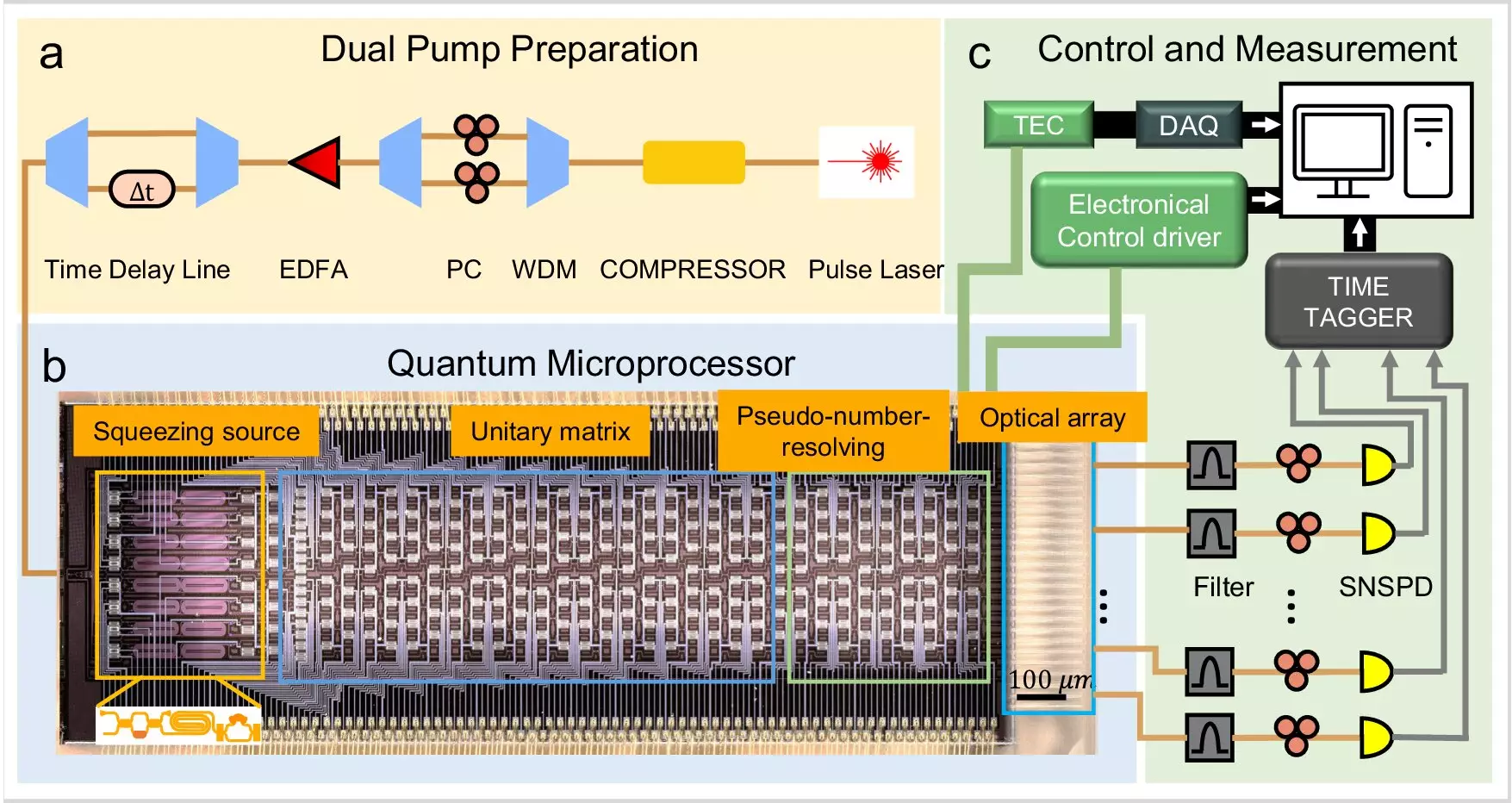Quantum simulation stands at the forefront of scientific exploration, enabling researchers to tackle complex problems that have long evaded solutions through conventional computing methods. These systems are particularly vital in an array of fields, including finance, cybersecurity, pharmaceuticals, and artificial intelligence. A prominent application is the study of molecular vibronic spectra—vital for dissecting the intricacies of molecular properties and design. Traditional supercomputers face substantial challenges when addressing these spectra due to their complex nature, making quantum computing a promising avenue for further inquiry.
The long-standing difficulties in simulating molecular vibronic spectra stem from the limitations of classical computational approaches. Traditional methods often fall short in accuracy when dealing with the complex interactions at the molecular level, particularly with large structures. Researchers are working diligently to address these limitations using quantum algorithms, but as of now, many advances have only been applicable to simpler molecular structures. The inherent noise and low accuracy in simulations have posed significant challenges, ultimately restricting the full potential of quantum computing in this area.
A groundbreaking breakthrough has emerged from The Hong Kong Polytechnic University (PolyU), where researchers have unveiled a quantum microprocessor chip that successfully simulates molecular spectroscopy for complex, large-structured molecules. This achievement is recognized as a world-first in the realm of quantum microprocessors and signifies a monumental leap forward in computational capabilities. The research, published in *Nature Communications*, under the title “Large-scale photonic network with squeezed vacuum states for molecular vibronic spectroscopy,” provides a vital resource in representing how quantum mechanics can be effectively harnessed for complex simulations.
The team was led by Professor Liu Ai-Qun, an esteemed figure in the field of quantum engineering. Collaborating closely with Dr. Zhu Hui Hui, a prominent research fellow, their work introduces a novel theoretical framework that employs linear photonic networks combined with squeezed vacuum quantum light sources, thus enhancing the simulation of molecular vibronic spectra.
At the core of this research is the development of a 16-qubit quantum microprocessor chip, meticulously designed to integrate various requisite components for a complete quantum computing system. This includes hardware integration across optical, electrical, and thermal dimensions, alongside robust software tools for device operation and quantum algorithm development. Such integration heralds a new operational paradigm, allowing for unprecedented computational capabilities in quantum chemistry applications.
Dr. Zhu notes the significance of their approach, which could lead to practical molecular simulations that exceed the limitations of classical systems. This development not only enhances the understanding of molecular behavior but also collaborates techniques from quantum machine learning, thereby offering transformative potential across scientific disciplines.
The implications of this research extend beyond mere academic interest; they resonate deeply within the industries reliant on molecular simulations. The quantum microprocessor chip created by Professor Liu’s team paves the way for advancements in diverse applications, ranging from optimizing molecular reactions to simulating intricate protein structures. With enhanced speed and accuracy, the ability to simulate these systems opens new discussion lanes regarding drug discovery and material innovation.
Professor Liu expresses optimism about the research’s potential societal impact, highlighting aspirations to expand the microprocessor’s capabilities further. The goals include tackling increasingly complex computational challenges that could deliver substantive benefits to both the scientific community and sectors like pharmaceuticals, biotechnology, and materials science.
The work conducted at PolyU encapsulates a critical advancement in quantum technology, serving as a fundamental building block for a future where quantum computing can solve previously insurmountable challenges in molecular spectroscopy. As the field continues to evolve, researchers remain dedicated to pushing boundaries and exploring the limitless opportunities quantum technologies offer. This journey towards mastering quantum simulation promises not just academic achievement but also the enhancement of industries that rely on sophisticated molecular modeling and analysis. The future awaits, and with it comes the potential for quantum leaps in both research and application.

